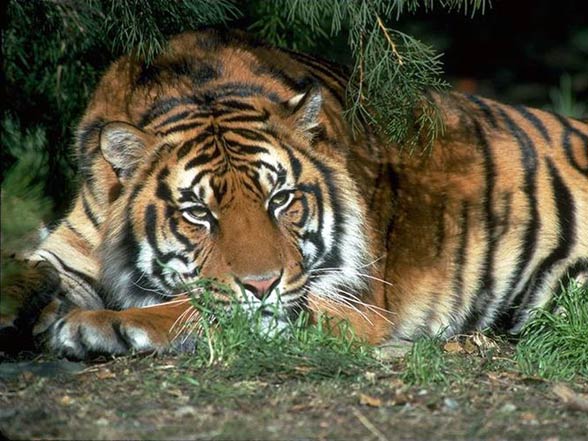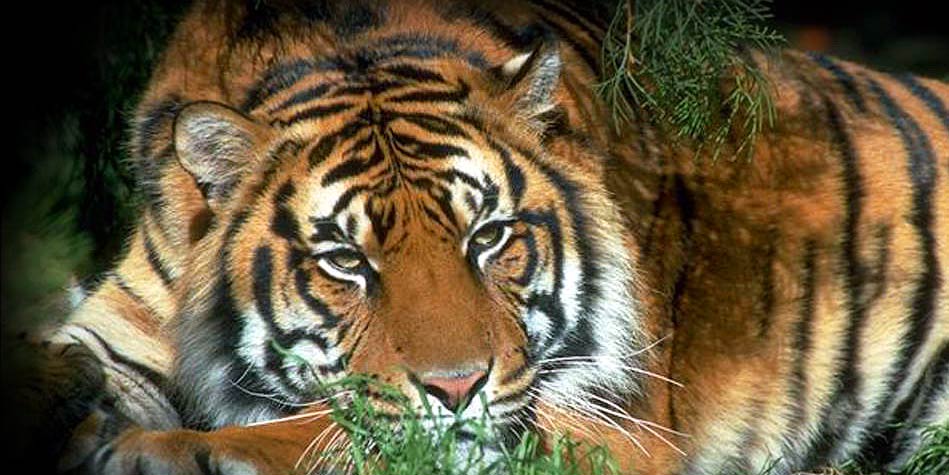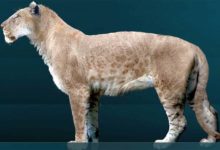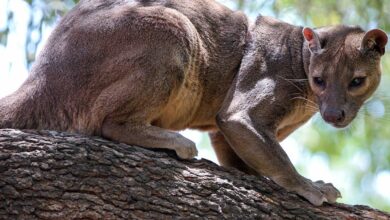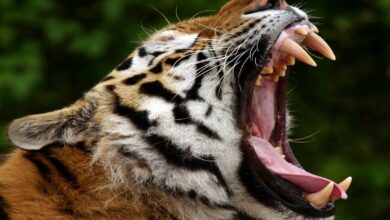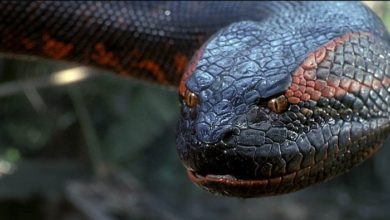South China tiger (Panthera tigris amoyensis)
In the rolling hills and dense forests of southern China, a mysterious predator roams, shrouded in mystery and legends. The South China tiger (Panthera tigris amoyensis) is one of the world’s most endangered big cats, known for its striking stripes and powerful build. With a unique history that dates back thousands of years, this subspecies of tiger has long captured the imagination of the Chinese people, inspiring tales of folklore and bravery. However, as human populations have grown and encroached on the tiger’s habitat, the South China tiger has become one of the world’s most imperiled species, facing threats from habitat loss, poaching a desperate effort to protect this magnificent creature and its legacy for future generations.
Everyone knows Bengal, Siberian or Sumatran tigers, and if they don’t, they at least have heard about them 🙂 However, only few people know that there is a bit more of tiger subspecies. Today we are presenting critically endangered tigers – South China tigers – that systematically lose their battle for life with people…
Classification
- Class: Mammalia
- Order: Carnivora
- Family: Felidae
- Genus: Panthera
- Species: Tiger (Panthera tigris)
- Subspecies: South China tiger (Panthera tigris amoyensis)

Description
The South China tiger (Panthera tigris amoyensis) is a subspecies of tiger that is native to the forests and hills of southern China. It is one of the world’s most endangered big cats, with only around 100 individuals estimated to remain in the wild.
In terms of size, South China tigers are relatively small compared to other subspecies of tiger.
One of the most distinctive features of the South China tiger is its unique stripe pattern. Each individual tiger has its own unique pattern, much like a human’s fingerprint, making it easier for conservationists to track and monitor individual tigers.
The South China tiger is a solitary creature, spending most of its time alone except when mating or caring for its young. It is a crucial predator in its ecosystem, preying on deer, pigs, and other animals that could become overabundant without their presence.
However, the South China tiger is facing significant threats to its survival, including habitat loss and poaching a desperate effort to protect this magnificent creature and its legacy for future generations. Conservationists are working to reintroduce the South China tiger to the wild, with some success in breeding captive individuals and releasing them back into protected areas.
Tigers have been losing their fight for survival for years, finding themselves on the verge of extinction. Although each subspecies has a different situation regarding its population, none of them can feel safe.
How long are we going to be able to admire these big and dignified cats – we don’t know. But we know that people bear the greatest responsibility for their endangerment.

Occurrence and habitats
The former range of distribution of this subspecies was 2,000 km (1,200 mi) from east to west and 1,500 km (930 mi) from north to south of China.
From the east the tiger inhabited Jiangxi and Zheijang Provinces, and in the west – Guizhou and Sichuan.
From the north, the tiger lived in the Qin Mountains and near the Yellow River (Huang He), and in the south it inhabited Guangdong, Kuangsi and Junnan Provinces.
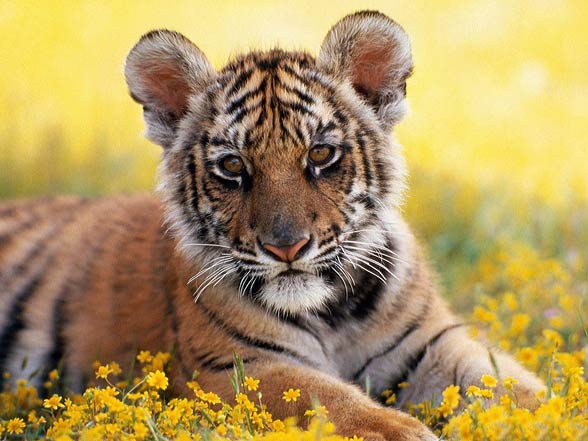
Characteristics
Appearance
It’s the smallest subspecies of the tiger form the continental part of Asia. Male tigers are 230 – 265 cm (91 – 104 in) long and weigh 130 – 175 kg (287 – 386 lb). Females are smaller – their body length is between 220 – 240 cm (87 – 94 in) and they weigh 110 – 115 kg (243 – 254 lb). The biggest male skull that had been found was 31.8 to 34.3 cm (12.5 – 13.5 in), and female one – 27,3 – 301 cm (10.7 to 11.9 in).
Diet
As its relative described above, the South China tiger prefers large ungulates, thus, it often hunts boars, and sometimes the Indian hog deer, muntjacs and colobine monkeys. It also has to settle for porcupines, hares and peacocks, that constitute the minority of the tigers’ diet anyway. Because of the human interference in the tigers’ habitats, pets and livestock are also the prey of the big cats. In the past, in the former range of distribution, the menu of these big cats included also the tufted deer, serows and sambar deer.
Usually, the tiger attacks from the side or back from a short distance, to grasp its prey’s neck and kill it quickly. After that, it drags the carrion even several hundred meters further, to eat in peace. Because of the low access to food and the method of hunting, the South China tiger feeds in accordance to the rule “feast or hunger”, so it can eat 18-40 kg of meat in one go.
Sad statistics – endangered tigers
The South China tiger is nowadays classified as critically endangered, but it is possible that the species has gone extinct in the wild. There is a small chance that some individuals inhabit the southern forests of China – in 1990s their survival was considered unlikely because of the low population of wild game, vast degradation of habitats, fragmented population and human interference.
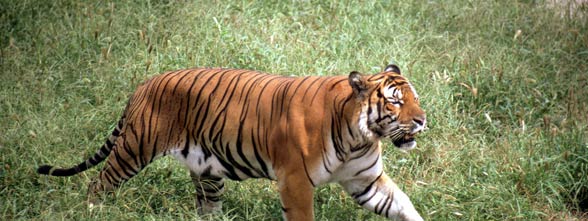
Detailed information / size
South China tiger (Panthera tigris amoyensis)
- Body length:
- males: 230 – 265 cm (91 – 104 in)
- females: 220 – 240 cm (87 – 94 in)
- Weight:
- males: 130 – 175 kg (287 – 386 lb)
- females: 110 – 115 kg (243 – 254 lb)
- Lifespan:
- 10-15 years in the wild
- 15-20 years in captivity
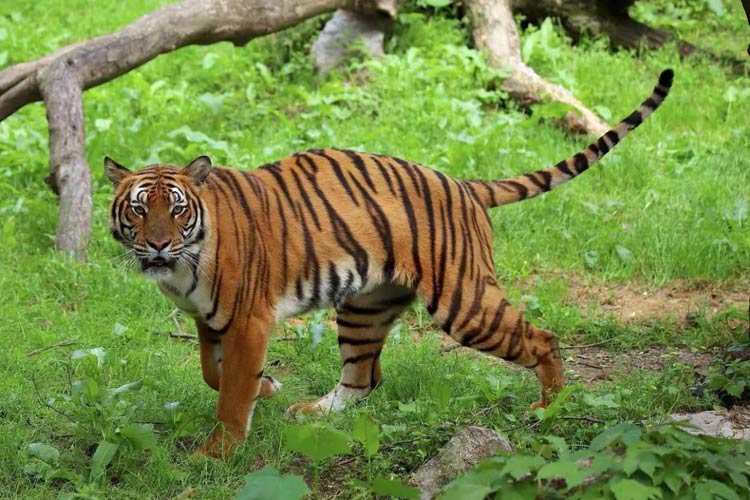
South China – interesting facts
- The South China tiger is considered the most characteristic representative of the whole species in terms of its morphology.
- Tigers are the victims of poachers who work for people dealing with traditional folk medicine – it is one of the main factors causing the extermination of these beautiful predators.
- Endangered Status
The South China tiger is one of the world’s most endangered big cats, with only around 100 individuals estimated to remain in the wild. - Unique Stripe Pattern
Each South China tiger has a unique stripe pattern, much like a human’s fingerprint, making it easier for conservationists to track and monitor individual tigers. - Historical Significance
The South China tiger has a rich history in Chinese culture, where it was often depicted in artwork and was considered a symbol of strength and bravery. - Native Habitat
The South China tiger is native to the forests and hills of southern China and was once widely distributed throughout the region. - Reintroduction Efforts
Conservationists are working to reintroduce the South China tiger to the wild, with some success in breeding captive individuals and releasing them back into protected areas. - Smaller Size
Compared to other subspecies of tiger, the South China tiger is relatively small, with males weighing up to 175 kg (386 lb) and females weighing up to 115 kg (254 lb). - Solitary Creatures
Unlike other big cats, the South China tiger is a solitary creature, with individuals spending most of their time alone, except when mating or caring for their young. - Critical Role in Ecosystem
The South China tiger plays a critical role in maintaining the balance of its ecosystem, preying on deer, pigs, and other animals that could become overabundant without their presence. - Threats to Survival
The South China tiger is threatened by habitat loss, poaching a desperate effort to protect this magnificent creature and its legacy for future generations.
